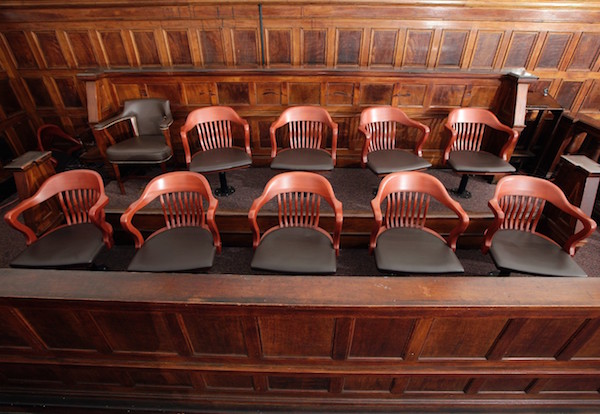Source of article The Sound Jury Library.

By Thomas M. O’Toole, Ph.D.
It has been a busy few months of picking juries for our consultants at Sound Jury Consulting. I have picked three juries in the past three weeks alone and we seem to have had a record number of cases lately that have made it all the way to trial. This has led to a lot of opportunities to see how different attorneys approach voir dire. The different approaches fall generally into three categories: 1) Well-planned and thought-out; 2) Those with questionable goals; and 3) Those with no apparent purpose.
It is difficult to understate the importance of jury selection, regardless of which philosophy you embrace. These are the people who are going to ultimately decide your client’s fate. The problem is that voir dire time is limited, even under liberal conditions. Due to these time constraints, attorneys are often forced to make difficult choices about how to spend their limited opportunity to speak with potential jurors. So let’s look at these three categories in more detail.
Well-planned strategies. The best jury selection strategies are those that are aligned with the fundamental purpose of jury selection, which is to identify biased jurors and remove them from the panel. When the court and a party disagree over whether a juror should be struck for cause, the party can use a peremptory strike to remove that individual from the panel. This is the only actual control attorneys have in the jury selection process. Anything else distracts from this focus.
Hostile jurors can be devastating in the deliberation room for the client. In the deliberation room, they can emerge as opinion leaders, create momentum for the other side, wear down your advocates on the jury, and control the general focus of the discussion. In other words, one adverse opinion leader can alter the course of deliberations and drive a verdict against your client. Viewed in this light, while it is debatable as to whether or not an attorney can “win” a case in jury selection, it is certainly true that a case can be lost in jury selection.
The best jury selection strategies are those that focus on identifying adverse attitudes and experiences amongst the venire, assessing the relative leadership capabilities of each potential peremptory target, and removing those who pose the greatest risk to the client in deliberations.
Those with questionable goals. The two most common examples of jury selection strategies with questionable goals are those where attorneys attempt to persuade jurors in voir dire or gain favor with them through trivial pandering. I have fought for years trying to convince attorneys to stop wasting time in voir dire selling their case, but the preference to do so is strong and widespread, with many attorneys absolutely convinced that it gives them an edge over their opponent. There is absolutely no research to support this belief. Some research supports primacy theory in general, but there is no research that demonstrates a primacy effect in voir dire. In fact, the only primacy evidence for jury decision-making is that it occurs in opening statements, not voir dire. Jurors lack the necessary context for persuasion in jury selection. They have heard almost nothing about the case, the claims, or the law that they will need to apply. In reality, they are primarily focused on the impact the trial will have on their life over the next few days or weeks. Beyond that, they are just trying to adjust to a confusing and sometimes intimidating courtroom setting.
Setting aside debates about whether or not persuasion actually occurs in voir dire, there is also the question of what is actually gained with these efforts. It sounds great that you might have persuaded a juror, but most attorneys seem to forget that the effort to persuade jurors helps identify your favorable jurors to the other side. These “persuaded” individuals nod their head affirmatively or voice concurring opinions during voir dire, which outs them to the other side. This makes your persuasive attempts meaningless because those who seem to be persuaded will just be struck by the other side.
Finally, there is a time trade-off issue. In most cases, attorneys have very limited voir dire time to learn about a large number of people. This means that every minute an attorney spends trying to sell the case means one less minute finding out meaningful information about where the risks lie in the jury pool. This strategy leaves the trial team (or consultant) with little to no information on who to strike and only increases the risk to the client. Voir dire is the time for jurors to talk, not the attorney, so it’s best to let them do so.
Those with no apparent purpose. Some attorneys are afraid of jury selection, so they procrastinate and do not take the time to develop a thorough strategy. Others presume the process will be much easier and more obvious than it actually is. This often results in painfully ineffective rambling in voir dire that creates the impression amongst jurors of a disorganized and inefficient attorney. This undermines the credibility of both the attorney and his or her client.
Jury selection strategy is not something that can be developed on the fly or figured out at the last second. It takes time and thought. Attorneys need to have a clear vision for what kind of attitudes and experiences they need to uncover. The questions have to be worded correctly in order to motivate jurors to provide meaningful information in their answers.
Finally, the questions have to be meaningful. Talking to jurors about their hobbies, their bumper stickers, or their favorite television show rarely provides useful information about what kind of juror they will be in this case. At best, this information requires a whole lot of assumptions in order to draw any type of conclusions, which only increases the risk of being wrong.
